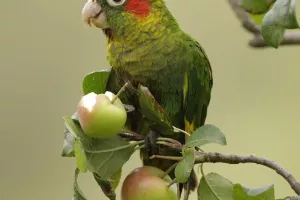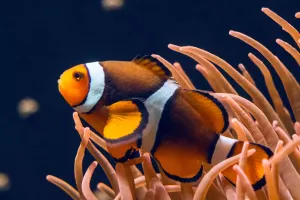Koalas are an arboreal mammal that lives in Australia. In February 2022, the Australian Department of the Environment announced that koalas were officially listed as endangered in key habitats such as New South Wales and Queensland, causing a lot of concern around the world. Every year, many animals in the world become endangered or even go extinct. Why do koalas affect the hearts of countless people around the world?
The global distribution of species is generally uneven, with extreme cases being endangered in one area and likely to be flooded in another. For example, Taal sheep, which are listed as first-class protected animals in China, are legally hunted in New Zealand. In Australia, koalas mainly inhabit places such as New South Wales and Queensland, while wild koalas in the world only live in Australia. Therefore, the endangerment of koalas in these states is, to a large extent, global endangerment.
The koala's endangerment heralds the possible extinction of a unique mammalian species. Although marsupials are also found in the Americas, koalas only inhabit Australia. Therefore, Australian koalas cannot find "cousins" anywhere on the earth. Once extinct, it will cause an imbalance in the biological chain and the permanent disappearance of the potential value of the species' gene pool and biological resources. Preventing the extinction of species, not to mention unique species like the koala, has become a global imperative.
Koalas have long been loved by people all over the world. Koala has a cute face like a teddy bear, innocent eyes and an unusually docile temperament. In order to grasp the branches more powerfully, the koala has also evolved two thumbs, and the 5-finger grip pattern has evolved from "1-4" to "2-3", which is more unique in appearance.
The eucalyptus leaves eaten by koalas contain cineol and hydrofennel terpenes, so they always exude a rich eucalyptus scent. As an arboreal animal, the koala sits on the branch of a tree and sleeps soundly. It is as innocent and innocent as a sleeping baby, and as sophisticated as a philosopher thinking about important things.
Both kangaroos and koalas are national treasures of Australia, but their treatment is very different. Kangaroos can give birth to a maximum of 4 kangaroos, and the two uterus of female kangaroos can maintain pregnancy throughout the year without vacation.
Australia's kangaroos have long been plentiful to the point of flooding, and despite being hunted legally, they remain at more than 50 million, twice the population of Australia. In comparison, koalas are exceptionally self-loving and self-disciplined, and generally only breed one cub a year. Rare is the most precious thing. In recent years, due to the small base, koalas have become more and more popular.
There are many kangaroos, with huge appetites and not picky eaters. They will naturally eat crops, grass and bark, compete with livestock for food and water resources, and even damage golf courses and fences. However, koalas are not only small in number and petite, but have only eaten Australian eucalyptus leaves for thousands of years. Australia has more than 1 million square kilometers of eucalyptus trees, which are absolutely inexhaustible for tens of thousands of koalas.
Why is such a cute koala an endangered species? Tracing the origin, this is mainly caused by humans. Before 1788, there were more than 10 million koalas in Australia. Indiscriminate hunting by humans for their fur reduced the koala population to about 100,000 by 1927. In 1930, Australia declared koalas to be protected animals. By 1990, the number of koalas had rebounded to more than 400,000. However, forest logging, urban development, road construction and other large-scale destruction of habitats caused koalas to suffer again.
The "Century Fire" from 2019 to 2020 burned more than 19 million hectares of land, killing and injuring as many as 60,000 koalas. Australia currently has fewer than 58,000 koalas. To this end, the Australian government said a few days ago that it will invest 50 million Australian dollars in the next four years to focus on the protection of koalas. Including funding koala health research, reducing reclamation of koala habitats, tailoring fire prevention plans to restore vegetation, focusing on building fences to prevent natural predators such as foxes, wild dogs and wild cats from entering, and building flyovers in key areas to allow koalas to pass safely etc.


